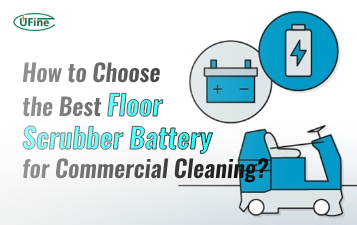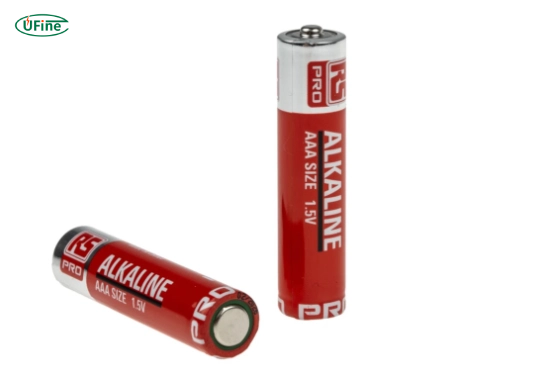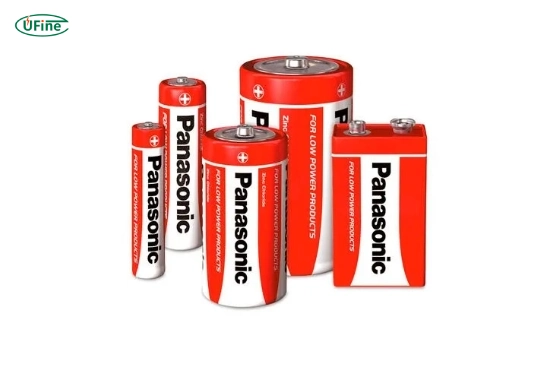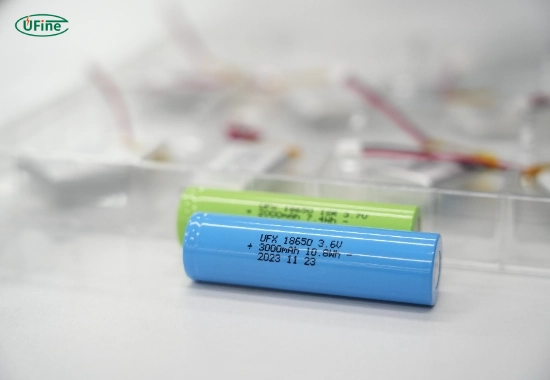Batteries are integral to our daily lives, powering everything from remote controls to electric vehicles. Understanding the differences between alkaline, carbon-zinc, and lithium batteries is essential for making informed choices about which battery type best suits your needs. This guide will comprehensively understand each battery type’s characteristics, advantages, and ideal applications.
Part 1. What are alkaline batteries?
Alkaline batteries are one of the most widely used types of batteries in household devices. They operate through a chemical reaction between zinc and manganese dioxide, utilizing an alkaline electrolyte, typically potassium hydroxide, to produce electrical energy.
Key Features:
- Voltage: Alkaline batteries typically provide 1.5 volts per cell, making them suitable for various devices.
- Shelf Life: When stored properly, these batteries can last up to 10 years, making them a reliable choice for long-term use.
- Capacity: Alkaline batteries generally offer a higher capacity than carbon-zinc batteries, ranging from 1,000 to 2,800 mAh, depending on the size and brand.
Advantages of Alkaline Batteries:
- Longer Lasting: In high-drain devices like digital cameras or game controllers, alkaline batteries outlast carbon-zinc batteries significantly.
- Widely Available: Alkaline batteries are available in most retail outlets and online platforms.
- Versatile Use: They are suitable for various applications, including toys, flashlights, and portable electronics.
Part 2. What are carbon-zinc batteries?
Carbon-zinc batteries are one of the oldest battery technologies still in use today. They consist of a zinc anode and a carbon rod as the cathode, with an acidic electrolyte that facilitates the chemical reaction necessary for power generation.
Key Features:
- Voltage: Like alkaline batteries, carbon-zinc batteries also provide 1.5 volts per cell.
- Shelf Life: These batteries have a shorter shelf life than alkaline batteries, typically lasting around 3 to 5 years under optimal storage conditions.
- Capacity: Carbon-zinc batteries usually have lower capacities than their alkaline counterparts, averaging between 400 and 1,000 mAh.
Advantages of Carbon-Zinc Batteries:
- Cost-Effective: They are generally cheaper than alkaline and lithium options, making them appealing to budget-conscious consumers.
- Lightweight Design: Their lightweight nature makes them easy to handle and transport.
- Ideal for Low-Drain Devices: Carbon-zinc batteries perform well in low-drain applications such as clocks and remote controls where high power is unnecessary.
Part 3. What are lithium batteries?
Lithium batteries are known for their high energy density and long shelf life. They utilize lithium as an anode material and can be found in both primary (non-rechargeable) and secondary (rechargeable) forms.
Key Features:
- Voltage: Lithium batteries typically provide a higher voltage of around 3 volts per cell, which allows them to power more demanding devices efficiently.
- Shelf Life: When stored properly, these batteries can last up to 10 years or more, making them an excellent choice for emergency devices or infrequent gadgets.
- Capacity: Lithium batteries boast the highest capacity among the three types discussed here, often exceeding 2,500 mAh in standard sizes like CR2032 or AA variants.
Advantages of Lithium Batteries:
- High Energy Density: They provide more power in a smaller size than alkaline or carbon-zinc options.
- Longer Shelf Life: Lithium batteries retain their charge longer than alkaline and carbon-zinc types due to their low self-discharge rate.
- Rechargeable Options Available: Many lithium batteries can be recharged multiple times without significant performance loss, making them cost-effective over time for high-drain applications like digital cameras or smartphones.
Part 4. Comparing performance: alkaline vs. carbon-zinc vs. lithium
When choosing between these battery types, understanding their performance differences is crucial. Here’s a breakdown of how they compare based on various factors:
Voltage and Energy Output:
Alkaline and carbon-zinc batteries provide 1.5 volts per cell; lithium batteries offer a higher voltage at approximately 3 volts per cell. This higher voltage enables lithium batteries to power more demanding devices effectively.
Capacity:
The capacity of each battery type varies significantly:
- Alkaline: Ranges from approximately 1,000 to 2,800 mAh.
- Carbon-Zinc: Typically ranges from about 400 to 1,000 mAh.
- Lithium: Ranges from about 2,500 mAh upwards, depending on size and design.
Self-Discharge Rate:
Lithium batteries have the lowest self-discharge rate among the three types—around 1% per year—while alkaline batteries can lose about 10% of their charge annually if unused. Carbon-zinc batteries have the highest self-discharge rate, at approximately 20% annually.
|
Feature |
Alkaline |
Carbon-Zinc |
Lithium |
|
Voltage |
1.5V |
1.5V |
3V |
|
Shelf Life |
Up to 10 years |
3 to 5 years |
Up to 10+ years |
|
Capacity |
1,000 – 2,800 mAh |
400 – 1,000 mAh |
2,500+ mAh |
|
Self-Discharge Rate |
~10% per year |
~20% per year |
~1% per year |
|
Weight |
Moderate |
Light |
Light |
|
Rechargeable |
No |
No |
Yes (in some cases) |
Part 5. Ideal applications for each battery type
Understanding where each battery type excels can help you make informed choices:
Alkaline Batteries:
- Toys
- Flashlights
- Portable electronics
Carbon-Zinc Batteries:
- Clocks
- Remote controls
- Low-drain devices
Lithium Batteries:
- Digital cameras
- Smartphones
- High-performance electronics
Part 6. Environmental impact of each battery type
The environmental impact of batteries is becoming increasingly important as we strive for sustainability.
Alkaline Batteries:
While they are less harmful than other types when disposed of properly, they still contain materials that can be detrimental if not recycled.
Carbon-Zinc Batteries:
These are generally considered less environmentally friendly due to their lower recycling rates and the presence of heavy metals.
Lithium Batteries:
Although they have a higher recycling potential, improper disposal can lead to environmental hazards due to lithium’s reactive nature.
Part 7. Cost comparison: which battery is more affordable?
When considering cost, it’s essential to look at both the initial price and the overall lifespan:
- Alkaline Batteries are priced moderately; however, their longevity makes them cost-effective over time.
- Carbon-Zinc Batteries: Generally the cheapest option upfront but may require more frequent replacements.
- Lithium Batteries have a higher initial cost but are often more economical in high-drain applications due to their longevity and reusability.
Part 8. Safety considerations for each battery type
Safety is paramount when using batteries:
Alkaline Batteries:
Generally safe but can leak if damaged or improperly stored.
Carbon-Zinc Batteries:
Less likely to leak but can rust over time if not used properly.
Lithium Batteries:
While they are safe under normal conditions, they can pose risks such as overheating or exploding if damaged or improperly charged.
Part 9. Choosing the right battery for your needs
Selecting the right battery depends on your specific requirements:
- For everyday household items with moderate power needs, alkaline may be your best bet.
- Carbon-zinc could work well if you’re looking for cost-effective solutions for low-drain devices.
- Lithium is often the superior choice for high-performance gadgets that require reliable power over extended periods.
Part 10. FAQs
-
What is the main difference between alkaline and lithium batteries?
The primary difference lies in voltage and energy density; lithium batteries typically provide higher voltage (3V) and greater energy density than alkaline (1.5V). -
Can I use carbon-zinc batteries instead of alkaline ones?
However, performance may vary; carbon-zinc batteries only last briefly in high-drain devices with alkaline excels. -
Are lithium batteries rechargeable?
Some lithium batteries are rechargeable; however, checking the specifications before use is essential, as not all lithium options are designed for recharging. -
Which battery type lasts longest?
Lithium batteries generally have the most extended lifespan due to their high energy density and low self-discharge rate compared to alkaline and carbon-zinc options. -
How should I dispose of these batteries?
Always follow local regulations for battery disposal. Recycling programs exist for all three types but vary by region. Ensure you’re disposing of them responsibly.
Related Tags:
More Articles

How to Choose the Best Floor Scrubber Battery for Commercial Cleaning?
Selecting the ideal floor scrubber battery ensures a long runtime, rapid charging, and minimal maintenance for efficient commercial cleaning operations.
Battery for Blower vs Battery for Leaf Vacuum: Which One Should You Choose?
Battery for blower vs leaf vacuum—learn the key differences in power, fit, and runtime to choose the right battery for your outdoor tool needs.
How to Choose the Right Battery for Blower?
Choosing the right blower battery? Consider voltage, capacity, chemistry & usage. This guide helps match the best battery for peak performance.
How to Choose the Best Insulated Battery Box for Lithium Batteries?
Choosing the Best Insulated Battery Box for Lithium Batteries? Discover key factors such as size, material, and safety for optimal protection and performance.
7 Critical Elements on a Lithium Battery Shipping Label
What must be on a lithium battery shipping label? Learn 7 key elements to ensure safety, legal compliance, and correct handling across all transport modes.






